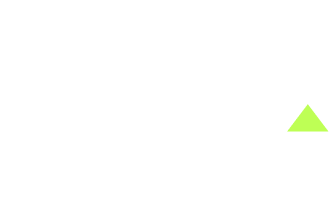
WHAT IS A LAND’S HIGHEST AND BEST USE IN GOVERNMENT ACQUISITIONS?
The populations of Metropolitan Melbourne and Victoria are growing rapidly, requiring new and improved government facilities and infrastructure. As a result, there’s a need to deliver land for those projects – often on privately-owned land. We sat down with UPco Principal Consultant Andrew Clarke to walk us through the process of determining the highest and best use of land in land acquisition and compensation cases, and why there’s more to it than meets the eye.

First up, who delivers major infrastructure projects?
As part of its Big Build, the Victorian State Government (and its various agencies and statutory authorities) has been building new public facilities and transport corridors and upgrading and widening existing corridors to increase capacity. Some of these projects have been on the Government’s “to do” list for decades. Others are new ideas and have only been mooted for a short time.
Where can these projects be built, and what if someone already owns the land?
Many of these projects are in growth areas, but they can be proposed anywhere there’s need. Some are located at ground level, others involve underground tunnels, and some are elevated above the ground. But almost all involve at least some compulsory acquisition of private land interests – bringing us to the complex issue of how to determine appropriate compensation for landowners.
If a government agency seeks to compulsorily acquire privately owned land to accommodate an infrastructure project, it is generally compelled by legislation to pay the owner “fair and reasonable … compensation”.[1]
And how do you know what’s fair and reasonable?
The answer is influenced by a variety of factors that have been the subject of numerous Court and Tribunal decisions. At the outset, the land needed for the project is assessed at its hypothetical highest and best use, as if the infrastructure project and the acquisition did not exist. This is referred to as the “before” scenario. Then, land not acquired (if any remains) is assessed at its hypothetical highest and best use as a consequence of the acquisition. This is referred to as the “after” scenario.
These two values form the basis of compensation – in simple terms, by subtracting the “after” value from the “before” value.
So, what’s the challenge of evaluating each scenario?
Well, we’re really dealing in hypotheticals. As part of valuing the “before” scenario, land valuers are faced with the often-difficult task of hypothesizing how the land could have been used and developed if the land acquisition and its associated project had never been proposed. This is where the town planner comes in – we help the valuer formulate how the land could have been used.
Often, where the project has been in the planning pipeline for a long period of time, the proposed infrastructure project has already had a profound effect on the shape and form of the area within which it is located.
Can you think of an example where that’s happened?
A common example is a township highway bypass project, where the planned infrastructure project itself (the bypass) is used by the planning authority (such as the local council) to define the township urban/non-urban boundary. But in the hypothetical valuation exercise, you have to ignore that when assessing whether the acquired land would have been inside or outside the township. Instead, you explain how the township most likely would have developed had there been no bypass to define the boundary.
Or in the case of a new railway station, you analyse the development parameters that would have existed if the station were never proposed. You have to ignore the increase in population density (and associated development potential such as the ability to build apartment towers) that happens as a response to public transport facilities being improved in the area as part of the project.
That sounds complex. As a town planner, what’s your role in getting around that?
We have to undertake a careful forensic planning analysis of a wide range of hypothetical ‘what ifs?’. We can then form a considered conclusion and recommendation about the most likely urban form and structure that would have happened if not for the project.
Town planners are frequently engaged to provide this kind of detailed advice to the land valuers. Over the years, we have assisted private landowner clients and government agencies in land acquisition and compensation matters by providing expert highest and best use assessments in both “before” and “after” scenarios.
Some projects UPco’s town planners have advised on include upgrades to Chandler Highway, Mickleham Road, Hall Road, Western Port Highway, Koo Wee Rup Road and Western Roads. Our town planners have also worked on the Drysdale Bypass, North East Link, the Suburban Rail Loop and the Level Crossing Removal Project – so there’s a bit of experience in this field!
What happens if the value is disputed?
Sometimes these projects result in disputes between the acquiring government agency and the landowner, and can only be resolved in either the Supreme Court of Victoria or the Victorian Civil & Administrative Tribunal (VCAT). In these cases, we’re frequently called on to provide an opinion to the decision-maker about the highest and best use of the land.

Any questions about this (or anything else planning related)? Send them our way and we’ll do our best to answer – just email info@upco.com.au
[1] Section 31(3), Land Acquisition and Compensation Act (Vic) 1986
